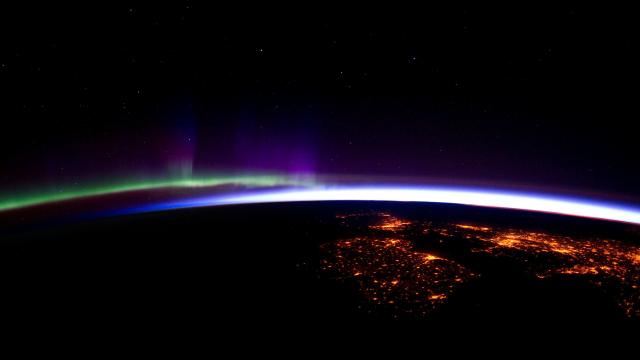When the world gets its act together, it can actually solve big problems. Case in point: The ozone hole, which if everything goes according to plan could be healed up by the 2060s, according to a new report from the United Nations.
According to the report, a decades-old international treaty to ban ozone-depleting chemicals has led to their decline and “much more severe ozone depletion in the polar regions has been avoided.” There’s still work to be done, but this definitely falls into the Good News category.
“We’re at the turnaround point,” Paul Newman, a scientist who helps run NASA’s Ozone Watch and chaired the UN report, told Earther.
The report is put out every four years, and this is its fifth iteration. It tracks a 1980s-era environmental problem we’re still feeling the effects of today. The ozone hole is driven by a number of chemicals that were commonly found in aerosol cans, air conditioners, and refrigerators, called chlorofluorocarbons and hydrochlorofluorocarbons. Those chemicals unleash chlorine in the stratosphere, which in turn can break apart ozone molecules. When that happens, more ultraviolet light from the sun makes it to the surface, increasing the risk of bad things like skin cancer. The problem was particularly noticeable over Antarctica, where an ozone hole began to form each spring.
Scientists identified the chemicals as problematic, and policymakers actually acted on it. The Montreal Protocol was inked in 1987. After 30 years, the ozone hole still continues to be an annual occurrence. But the new report definitively adds to a 2016 study showing the ozone hole has been on the mend since 2000. If all goes according to plan, ozone levels in the region could return to pre-hole conditions within 40 years.
In other regions where ozone depletion has been less severe, the return to normalcy could come even sooner. The Arctic and mid-latitudes of the northern hemisphere could get there by the 2030s, and the mid-latitudes in the southern hemisphere could reach 1980s levels of ozone by mid-century.
To reach that timeline of ozone recovery, the world is going to have to keep working to reduce other ozone-depleting chemicals and not throw a wrench into the recovery process in other ways. On a few levels, there are some warning signs scientists are watching.
The first is a mysterious uptick in CFC-11, a chemical that was banned under the Montreal Protocol. Though outlawed, research published earlier this year showed that it’s point to China as the culprit of the illicit emissions, and it will have to be stopped to keep the recovery on track.
Another factor is what happens with the fight to curb global warming. The ozone hole and climate change are by and large separate problems, but they do overlap a bit. The warming effect in the lower atmosphere associated with increased greenhouse gases also leads to cooling in the stratosphere, which sits about 6-12 miles above the planet’s surface. That can slow down the ozone-depleting process, which could expedite recovery in some locations.
At the same time, the report notes that increased warming due to greenhouse gases changes planetary circulation in the atmosphere in ways that can lead to less ozone in the tropics and more in the Arctic and mid-latitudes. So curbing greenhouse gas emissions—including the ones produced by ozone-depleting chemicals’ replacements—is still probably, you know, a good idea.
The last issue is perhaps the most unnerving one because we know so little about it. The report raises concerns of what would happen if the world or even a rogue state decided to cool the planet by sending tiny particles up into the stratosphere. The process, known as geoengineering, is wrought with potential consequences here on the ground and likely would be in the stratosphere, too.
“The problem with that is our level of knowledge of natural levels of particle in stratosphere is not that high,” Newman said. “Geoengineering presents quite the challenge by perturbing natural levels of particles in stratosphere on top of that impact on ozone.”
So, let’s maybe not do that and instead keep trying to mend the ozone hole and solve global warming here on the ground.
